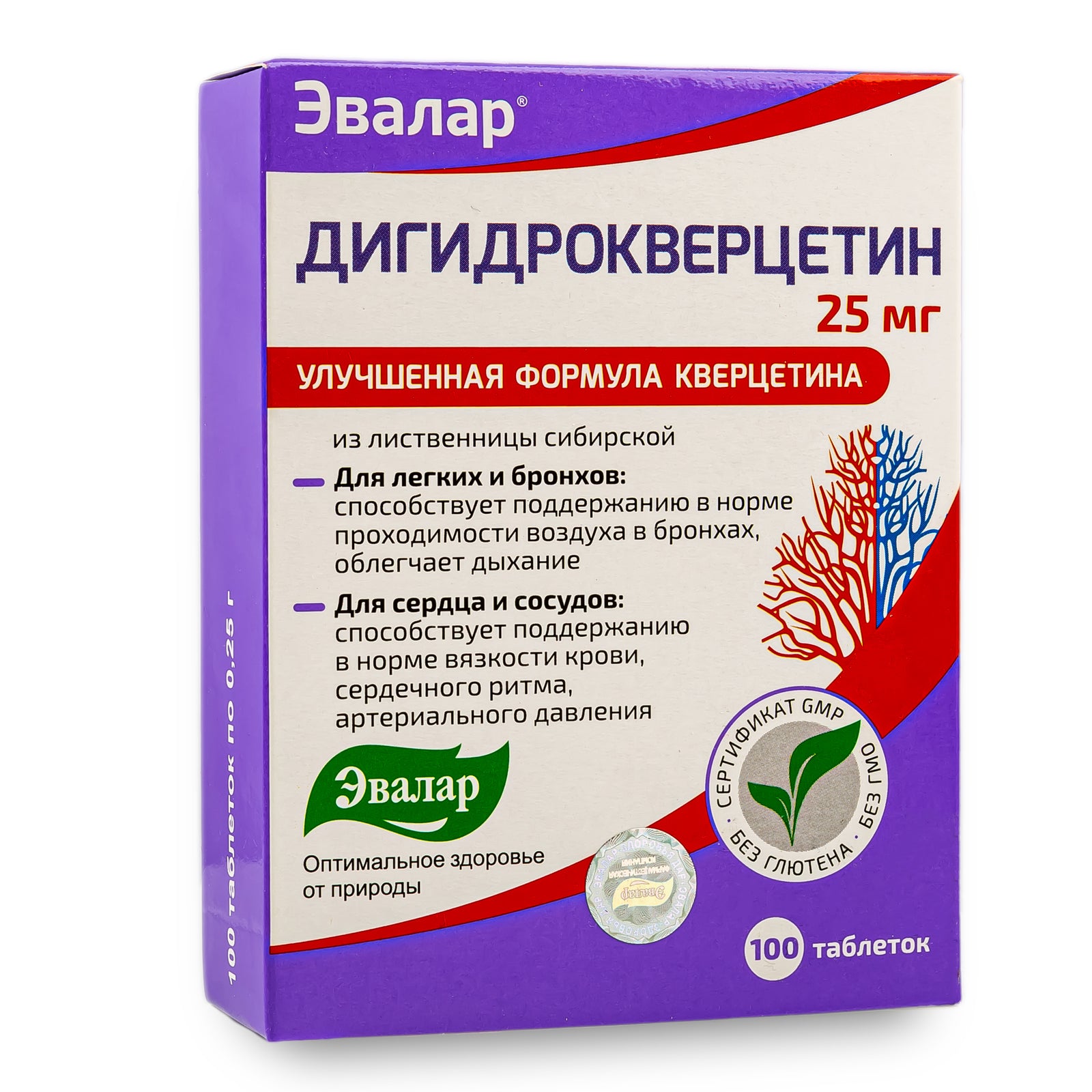Both of these biochemical compounds are widely distributed in the plant world, belong to the class of natural flavonoids, and have long been successfully used as food additives, or biologically active substances. Both quercetin and dihydroquercetin have been actively studied since the forties and fifties of the XX century.
As a result, it turned out that Dihydroquercetin (having a second name - taxifolin) in all respects, surpasses quercetin, if we are talking about a positive effect on the human body.
Many people ask which flavonoid to give preference to, and why. But a pharmacist often does not have just enough time to explain in detail the difference between quercetin and taxifolin to a person without medical or biological education, and tell why the second is preferable. But we will try to do it (with the help of simple and understandable terms) in this short article.
Quercetin: origin of the name and occurrence in nature.
First of all, let's start with the name. Quercetin - means "made from oak", since "quercus" (Latin) is an oak. So, the well-known oak bark, which helps from bleeding and diarrhea, is called cortex quercus.
Agree that for an ordinary person, oak quercetin has nothing to do with the diet. But other fruit and vegetable crops containing it in the composition are much more common, and a person has been eating them for a long time. These are many fruits of bluish-purple or rich red color.
For example, these are mountain ash and raspberries, cherries and plums, gooseberries, cranberries and some sorts of tomatoes. Red grapes and red, purple onions, as well as onion husks, red cabbage are also rich in quercetin. In Australia, bees often collect pollen from tea trees and eucalyptus flowers during the honey harvest, and it is in these varieties of honey that quite a lot of quercetin turns out to be a result. We should not forget such a fragrant green culture as lovage (Levisticum officinale). Red wine, along with resveratrol, and olive oil (some of its varieties) are rich in it, this bioflavonoid.
Dihydroquercetin: medicinal properties and where it can be found.
As for dihydroquercetin, or taxifolin, it was discovered back in 1938, and for the first time showed its effectiveness in the fight against bleeding gums. At that time, the structure of dihydroquercetin was not yet known, and its functions, during the Second World War, research was suspended. But now we can fully explain its healing properties.
But here's the problem: unlike quercetin, it was not found in plants so often, despite the fact that quercetin and taxifolin molecules are very similar in structure, but very different in function and ability to heal the body.
Dihydroquercetin was found in grape seeds and rose petals, but naturally, it would be at least costly to isolate dihydroquercetin from these substances on an industrial scale, and we also do not use rose petals and grape seeds for food. Yes, there is a recipe for exotic jam made from rose petals and cold-pressed grape seed oil, but it is unlikely that they can be compared with onions, cabbage and plums in terms of frequency of use.
However, an almost inexhaustible source of taxifolin has now been found. This is an ecologically clean Siberian larch (Larix sibirica), which forms huge arrays of taiga forests in Siberia and the Far East. Dihydroquercetin occurs unevenly in larch tissues. There is more of it in that part of the trunk, which is called a lump, and goes into the roots. There is this bioflavonoid most of all.
The similarity of quercetin and dihydroquercetin in terms of human health.
Since the molecules of these two biochemical compounds almost completely coincide, with the exception of two hydrogen atoms, their physical and biochemical properties are very similar, they do the same "thing", but to different degrees.
So, their most important effect in the animal body is the manifestation of antioxidant activity. Antioxidant activity is the ability to block the peroxidation of lipids or fats (POL), the ability to intercept free radicals that are formed due to the mechanisms of normal life, as well as in various pathological processes, and lead to a deterioration of metabolism and shortening of cell life.
Free radical, uncontrolled oxidation, also known as “Oxidative stress”, if not controlled, will eventually lead to the death of a cell, or many cells. So, both compounds discussed in the article block the harmful effects of free radicals. Both dihydroquercetin and quercetin bind metal ions inside cells, and reduce the potential for oxidative processes.
Thus, a reasonable solution from the point of view of health care would be to regularly eat foods containing both dihydroquercetin and quercetin. They are not mutually exclusive and have a positive effect on the human body in general.
*These statements have not been evaluated by the Food and Drug Administration. These products are not intended to diagnose, treat, cure or prevent any disease.Disclaimer: For educational and informational purposes only. The information provided by Persimmon LLC (“we,” “us”, or “our”) on https://siberiangreen.com (the “Site”) is for general informational purposes only. All information on the Site is provided in good faith, however we make no representation or warranty of any kind, express or implied, regarding the accuracy, adequacy, validity, reliability, availability or completeness of any information on the Site. UNDER NO CIRCUMSTANCE SHALL WE HAVE ANY LIABILITY TO YOU FOR ANY LOSS OR DAMAGE OF ANY KIND INCURRED AS A RESULT OF THE USE OF THE SITE OR RELIANCE ON ANY INFORMATION PROVIDED ON THE SITE. YOUR USE OF THE SITE AND YOUR RELIANCE ON ANY INFORMATION ON THE SITE IS SOLELY AT YOUR OWN RISK.





Leave a comment (all fields required)